I will teach you one of the most advanced weight training techniques in the world for developing size and strength. Here is a breakdown of sick sets and suicides for maximum muscle growth. Learn more.
 Sick Sets And Suicides: Pitbull's Guide To Massive Size And Explosive Strength! 
Basic strongman training is not a mystery to anyone familiar with the sport. You simply train for the actual events by performing them in the training hall. In the gym most amateur strongmen are performing the standard power exercises: the deadlift, the bench press, the squat, and the shoulder press. That's great, but if you expect to compete at the international or even national level you will have to do a lot more than that.
  Click To Enlarge. Click To Enlarge.If You Expect To Compete At The International Or Even National Level You Will Have To Do A Lot More Than That.
Read on and I will teach you one of the most advanced weight training techniques in the world for developing tremendous muscle size and strength. Little used in the West, this technique has been a staple of Eastern European strength athletes for decades.
 A Look At The Science 
Your body quickly responds to any disruptions in its equilibrium by taking defensive actions. For example, when you have an infection, your body increases the production of white blood cells in order to combat the infection. When you lift heavy weights, you are disrupting the body's equilibrium.
  Click To Enlarge. Click To Enlarge.When You Have An Infection, Your Body Increases The Production Of White Blood Cells In Order To Combat It.
When your muscles are consistently over-stressed, your body takes the defensive action of building larger muscle tissue. In actuality this process is far more complex. But, we as strength athletes only need to understand the basic principles of muscle growth in order to manipulate our bodies into growing larger and stronger muscles.
The bottom line is this: maximum muscle overload equals maximum muscle growth. In fact, muscle overload is the only stimulus for muscle growth. In the gym this simply means lifting extremely heavy weights. But any experienced lifter knows that this is easier said than done.
By eliminating the weak and risky section of the movement, you drastically decrease the risk of injury yet lose absolutely no growth potential. In fact, you will greatly increase the growth potential of your muscles because now that you are doing safe, strong range repetitions, you can handle much heavier weights than normal.
 Dispelling A Myth 
  Click To Enlarge. Click To Enlarge.Maximum Overload Is What Stimulates Muscle Growth; Flexibility Plays Absolutely No Part In The Process.
As your muscles grow in response to the tremendous stress placed upon them, ligaments, tendons, and bones become thicker, denser, and stronger in order to support the larger muscle mass.
The goal here is to turn you into a bigger, and therefore stronger and faster, strength athlete. Obviously if you are bigger, stronger, and faster your performance in the strongman events will improve dramatically.
 Down To Business 
Why are 5 or 6 reps best? The answer is: muscle overload and energy output.
Using a weight that is so heavy that it causes you to fail at 1 or 2 reps on your first set will certainly overload your muscles, but the amount of time that your muscles are under stress will be too short. Not enough energy will be expended to really "shock" your system. If, however, you can perform 9 or 10 reps, you are definitely stressing your body's energy resources but you are definitely not achieving maximum muscle overload. The correct balance is reaching first set failure at around 5 or 6 reps.
I am going to have you lift this weight in such a way that you will achieve both maximum muscle overload and maximum energy output in under 7 minutes, I guarantee it. And remember, as a strongman, you cannot afford to forget about improving your endurance. But don't worry, I have a very special technique just for you! It will either get you into fantastic shape or make you quit the sport. So take a deep breath, tighten your belt, and say a prayer because you are going to need it.
The Sick Set
At this point I am pretty sure that you don't have to worry about whether or not you have reached maximum muscle overload.
The Suicide Set
During your all too brief 2 minute break, your training partners will have taken a plate off each end of the barbell. Jump in and start banging out another set until you reach complete failure, then immediately have your partners strip off another plate from each side and do another set. Keep repeating this process until there is almost nothing left on the barbell.
I don't care if you're only getting 1 rep at a time, a suicide set is not over until you have puked, passed out, or fallen on the floor. And your training partners had better be stripping or adding those plates as fast as they can because there should only be a 3 to 5 second pause in between "sets." It should be like one long continuous nightmare that just keeps getting worse.
Now you really know what high-intensity training is all about. If you can't handle it, find another sport. If you think that you don't need to train like a maniac to become a good strongman, go lock horns with Mariusz Pudzianowski and then come and talk to me.
Workout:
 A Look At Specific Exercises 
 Click Image To Enlarge. Click Image To Enlarge.Barbell Bench Press - Medium Grip Click Here For A Video Demonstration Of Barbell Bench Press - Medium Grip.
For the shoulder press set the safety bars so that the barbell stops just above your head Make sure that your elbows cannot drop below your shoulders as this is when most shoulder injuries occur. Again this will be your starting position. Photo 4 shows the finish position.
 Click Image To Enlarge. Click Image To Enlarge.Seated Barbell Shoulder Press Click Here For A Video Demonstration Of Seated Barbell Shoulder Press.
For the squat, set the safety bars so that your buttocks always remain above your knees. Do not allow your buttocks to become parallel with, or drop below your knees, as again this is when injuries occur. I use a "horse collar" bar for this exercise.
 Click Image To Enlarge. Click Image To Enlarge.Barbell Full Squat Click Here For A Video Demonstration Of Barbell Full Squat.
Finally we come to the partial deadlift. Set the safety bars so that the barbell is at knee level. Perform the exercise like a normal deadlift pulling the bar up to the stop position. Always use lifting hooks or at least wraps. This exercise is not for developing grip strength, your hands will give out long before your body does.
Once you have stimulated muscle growth, you need to step back and let nature, or that Mexican pharmaceutical company, take its course.
However you choose to schedule these exercises, wait a minimum of 8 to 10 days before performing the same exercise again. If for example you do the squats and shoulder presses on a Monday, it should be at least Tuesday of the following week before you do them again. As a competitive strongmanyou still have a lot of other training to do, so plan your schedule carefully.
|
Hello everyone,GetBigLikeMOnster is a blog for all the bodybuilding lover's,its a place where you will find everything about bodybuilding.you will find all the information about Training programs , Techniques, Tricks used by professional bodybuilders to grow like a monster
Search This Blog
Saturday, 17 September 2011
Subscribe to:
Post Comments (Atom)



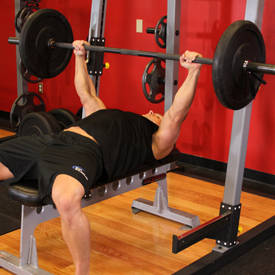
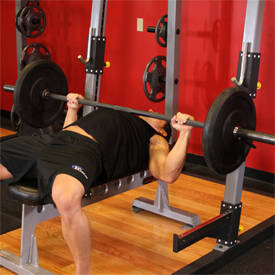
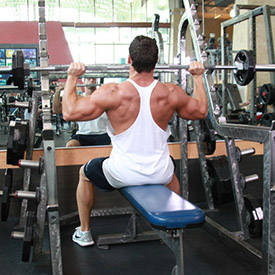
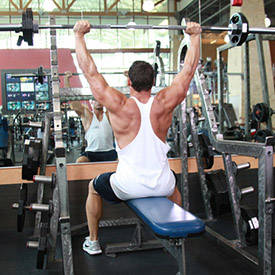
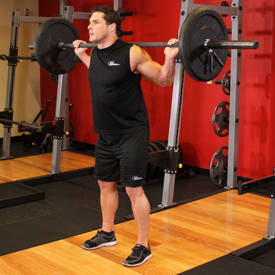
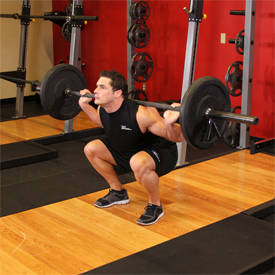
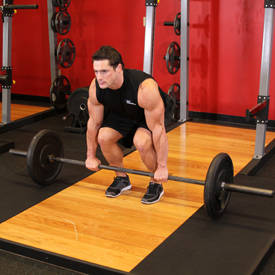
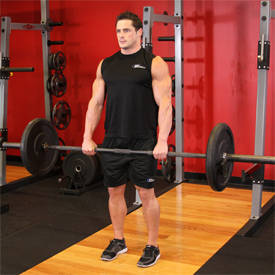
No comments:
Post a Comment